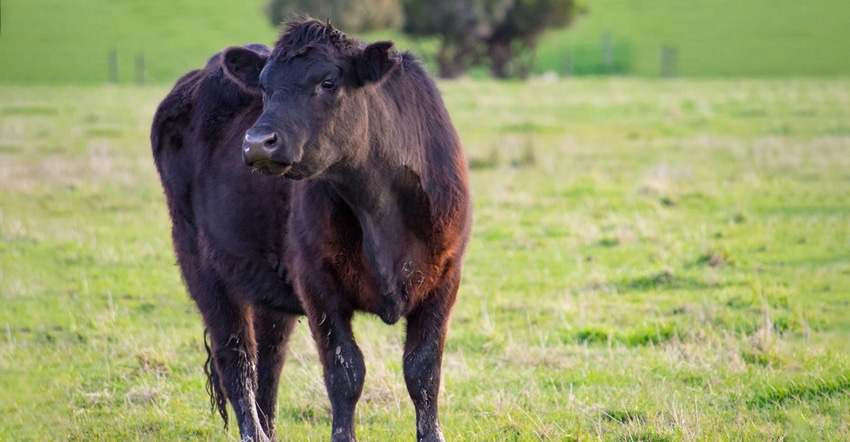September 15, 2020

Bulls have the greatest impact on a herd’s genetic progress. Deciding to keep a bull for another breeding season warrants protection of this investment to ensure he is in optimal condition when returned to the cow herd.
To protect your bull investment, implement a plan to ensure proper space and nutrition to promote young bull development and maintain mature bulls, provide protection in severe weather, and support the overall physical health of the bull.
Overwinter young bulls separately
Yearling and 2-year-old bulls benefit from overwintering in separate spaces, away from mature or more aggressive bulls. Yearling bulls are still growing and need additional nutrients to maintain warmth in the winter. Competing with mature bulls for feedstuffs is not ideal, and they also will compete for herd status, possibly leading to an injury.
If separate lots or pastures for overwintering young and mature bulls are not feasible, adequate space at the feed bunk and loafing areas is vital.
Mature bulls should regain lost weight from the previous year’s breeding season by consuming good-quality hay, or the same ration fed to dry cows. Ideally, weight gain should occur before the coldest of the winter weather, which is the most efficient time for weight gain.
Vitamins and minerals are part of a balanced ration. A reputable nutritionist can help formulate a balanced ration to make sure bulls meet body condition score targets. A BCS of 5 for both young and mature bulls is ideal and indicates enough fat cover to stay warm and healthy but not over-conditioned. Proper winter feeding will allow thin bulls to gain weight, young bulls to continue growing and mature bulls to maintain a targeted weight, so all are ready for the next breeding season.
Protect from severe weather
Drastic changes in temperature and weather conditions are of significant concern, as bulls must maintain proper scrotal temperature to protect their sperm-producing ability. Windbreaks and shelters with clean, adequate bedding help provide protection and keep animals dry. Check for frostbite during and after extreme weather events. If frostbite has occurred, the scrotum will become enlarged, and frostbit areas may scab. Testicles damaged by frostbite could take up to 60 days before viable sperm production resumes.
Performing bull breeding soundness exams 60 days before the breeding season begins will ensure bulls have recovered from any weather-related issues, or will allow farmers enough time to find a replacement bull.
Bulls need to be physically fit during the entire breeding season to get cows bred. During the winter months, bulls need enough space to remain active and conditioned for the breeding season. Locations of water access and feeding equipment can provide exercise when placed a significant distance apart. Routine cleaning of feeding and watering areas maintains safe footing and keeps the bulls coming to the feed bunk to eat with minimal risk of foot and leg injury. Well-planned winter facilities help prepare bulls for next year’s breeding season.
The bull is vital to future beef operations. Proper nutrition will allow young bulls to develop into the mature bull you hoped, and mature bulls to continue contributing to your herd’s progress. Proper winter protection and space provide conditions to ensure the bull will be free of injuries and physically fit. The calf crop two years from now seems like a speck on the horizon, but the efforts put in place during the winter months will help determine its success.
Ihde is the Extension agriculture educator in Richland and Crawford counties in Wisconsin. This column is provided by the University of Wisconsin-Extension’s Wisconsin Beef Information Center.
You May Also Like




